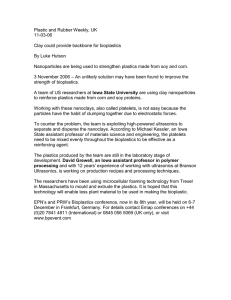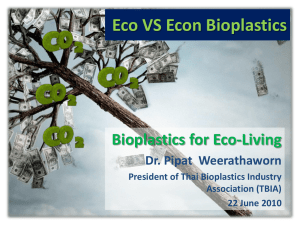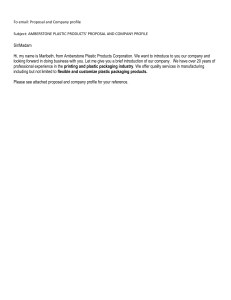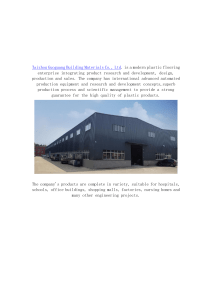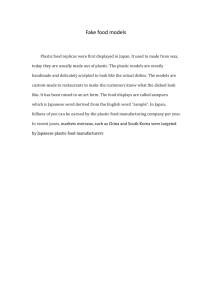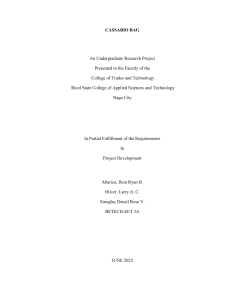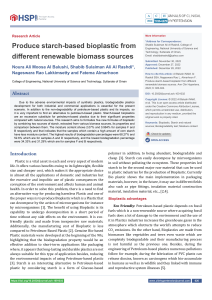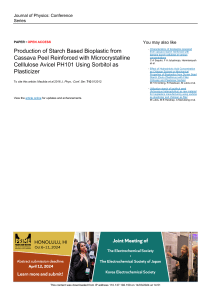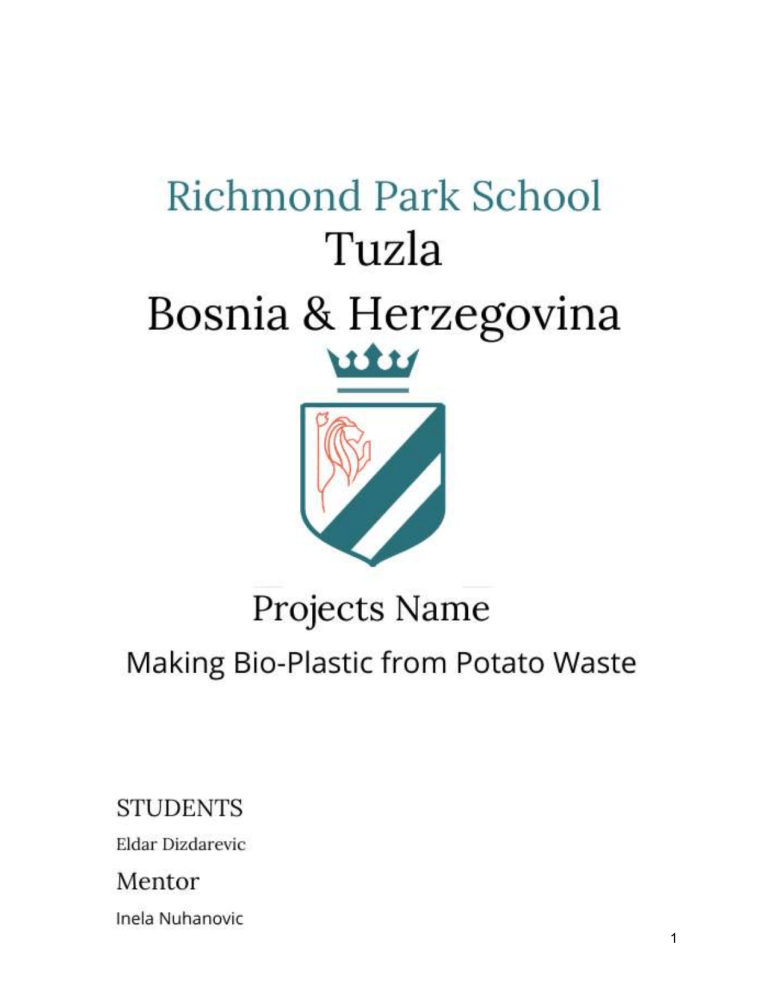
1 Table of Contest 3........................................................Aims of the project 4……...........................................................Introduction 5.……...........................................Bio-Plastic Production 6.…………...............................................Data & Results 7……..………................................................Conclusion 2 Aims of the Project 1- To clean our environment 2- To protect our atmosphere 3- To reduce the usage of natural fuels 4- To make fast decomposable materials 3 Introduction Plastics are more useful than metals, papers, and other materials because of their properties such as lightness, cheapness and durability. Therefore, they have been being used in almost every industrial field. Worldwide, more than 300 million tons of plastic were consumed in 2015. The whole world, even the oceans, is full of plastic wastes. In addition, the plastic industry has some disadvantages related to economic and environmental problems. The first disadvantage related to the environment is the shrinking of the landfill capacity because of the increasing of the plastic waste amount in the landfill areas. Increasing of the plastic waste leads to a crisis in the landfill due to the rising costs and strong legislation. On the other hand, oceans are also full of plastic wastes. The damaging of the marine ecosystem is the second disadvantage. The third disadvantage is that the waste management options are inadequate. Recycling proportion of plastics is very low. On the other hand, toxic emissions such as carbon dioxide and methane are generated because of plastic incineration. These greenhouse gases (GHGs) affect the worldwide climate change negatively. Plastic’s non-degradability or durability is the fourth disadvantage. It was known that plastics are not biodegradable and it can remain in the environment for hundreds of years. In addition, it is expected that fossil fuel will become more expensive and the supply will become more volatile. The economic problem is the increasing fossil fuel prices. 4 Potato Bio-Plastic Production Potatoes were cleaned up and peeled for further studies. Potato is than grated and grinded with kitchen stone grinder. We use the liquid that get out of potato. In few minutes starch will form at the bottom. We rinse the starch with more water. We pour the water out then place starch in the oven to get a white powder. Then we add additives such as: hydrochloric acid as well as glycerol. Than we place it on Bunsen burner and than we will get jelly like substance. The final stage is just to dry it on room temperature in oven. It can take up to 10 hours. 5 Data and Results Microstructure of bioplastics showed the incomplete gelatinization with the increase of starch: glycerol ratio indicated by the visible inhomogeneous granules. FTIR spectra exhibited that the intermolecular interaction in bioplastics occurred through C-O-H, O-H, C-H aliphatic and C=O groups. Mechanical properties evaluation showed that bioplastic with 3.5:1 (starch:glycerol) ratio exhibited the highest tensile strength of 2.57 MPa with the lowest elongation of 6.27%. Bioplastic with 3.5:1 (starch:glycerol) ratio also showed the highest density and contact angle of 1.66 g cm–3 and 50.1°, respectively. The fastest enzymatic degradation showed by the highest microbial growth was presented by bioplastic with 3.5:1 (starch:glycerol) ratio as well. 6 Conclusion Since many countries around the World are struggling with food shortages, producing bioplastics from wastes instead of foods is the best way to go. This study concluded that food wastes could be used for bioplastic production. In this study, it was determined that the bioplastics produced from potato peels completely biodegraded within 3 to 6 months, and it was suggested that these bioplastics can be used in packaging industry. The development of mechanical properties should be investigated for the utilization of it in different industrial areas. On the other hand, it was observed that the commercial bioplastic did not biodegrade in 3 to 6 months. Bioplastics usage has increased in recent years. Therefore, for the sustainability of those called as ‘biodegradable’, the standards should be developed. 7


